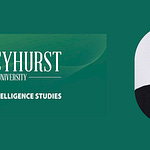Sarah Cammarata brings the curiosity of a journalist and the precision of an investigator to her work. A former reporter at Politico and Stars and Stripes, she now trains journalists in open-source techniques for the Centre for Investigative Journalism, while continuing to publish her own investigations.
In this episode, we talk about her journey from theater kid to political journalist, how social media sleuthing led her to OSINT, and the Wired investigation that uncovered a toxic network of Telegram groups doxxing women and sharing nonconsensual intimate images.
Below, you’ll find highlights from our conversation, edited for clarity and length.
On advice for newcomers:
I would just encourage people to look into an area of OSINT that they already might be interested in. I don't think you should push yourself to go into an area that you're not passionate about, because there's so many different areas of OSINT that there is genuinely something for everyone.
If you aren’t intrigued by geolocation, don’t force yourself to get into it. You don’t have to be an expert in it. If you are interested in social media, you can focus on that. You can be the Telegram expert or TikTok or Discord or Reddit or whatever it is. Or you could just focus on satellite imagery.
On storytelling and data:
You don't wanna present data without any context because it won't connect the audience to it in any meaningful way. The storytelling and narrative element will bolster the data, even if it’s not human sources.
Still rooting your data in the larger context, thinking about how it relates to more global trends is really important to get your message across, because at the moment we have a situation where our attention spans are so minuscule.
On encouraging more diversity and inclusion in OSINT:
Intelligence and tech is historically male-dominated — in these spaces, people entering the field can find this challenging. It’s tough navigating that.
I would encourage that people do not feel that they cannot apply. Even if you don’t tick every single box on a job application or you feel like you don't have enough experience to apply to a freelance opportunity or a fellowship, apply anyway.
With OSINT, I think the biggest thing to emphasize is that the work comes down to your mindset. So even if you don't have maybe higher level technical skills or you haven't used every single new tool, what really matters is how you can think or approach a subject and can explain how you would go about it.
On recommendations for great OSINT journalism:
I have so many. I tend to reference ProPublica, which is based in The US. They're a nonprofit newsroom. They do incredible work, and I'm always blown away.
There's a journalist called Craig Silverman, who I really, really, admire, who's written books on verification and OSINT and investigations.
There's also someone who currently works at the Wall Street Journal who's Jane Lytvynenko, and she has also been, an inspiration for me. She also trains on OSINT and incorporates that into her work.
There's Sofia Santos, who isn't a journalist, I also just wanted to plug her because I really admire her work in OSINT. I could go on and on, but I think newsrooms are recognizing how important OSINT is.












